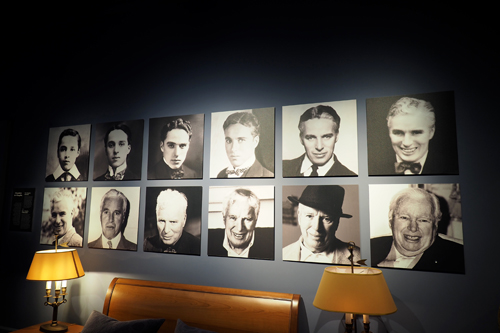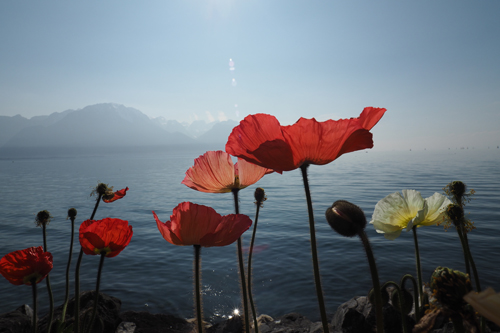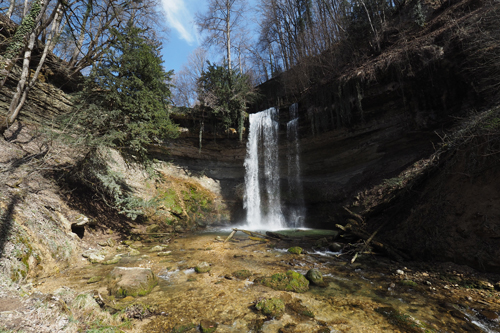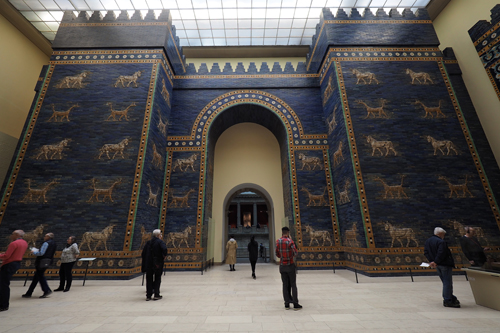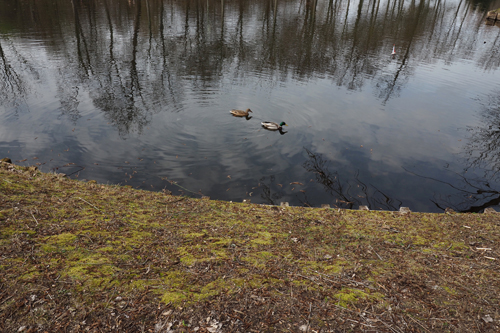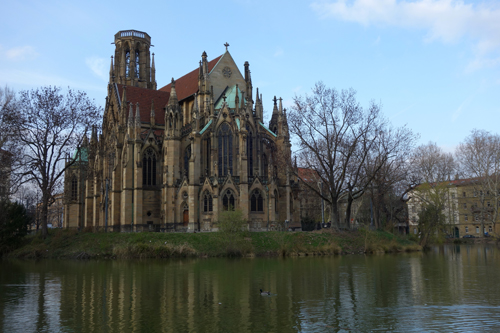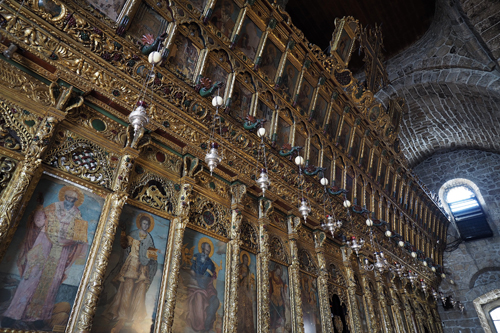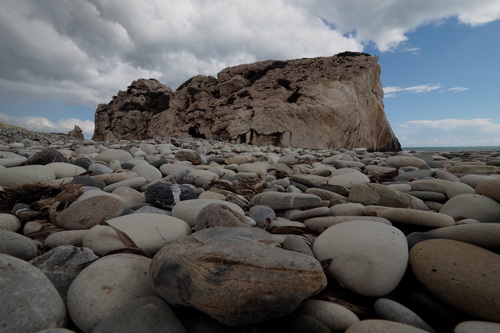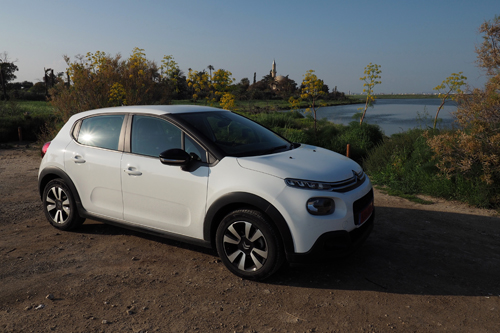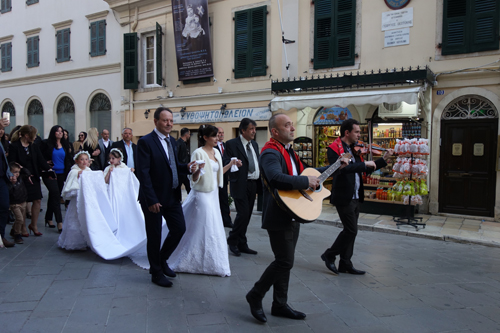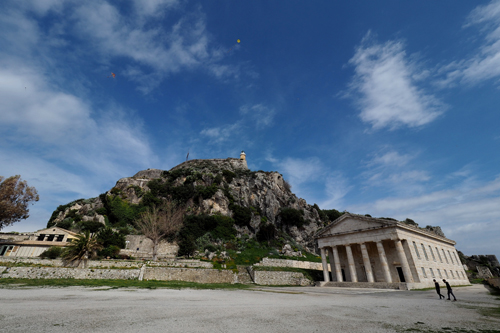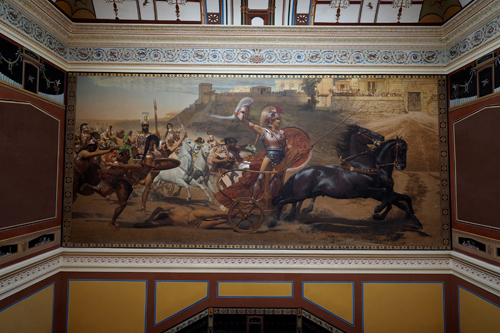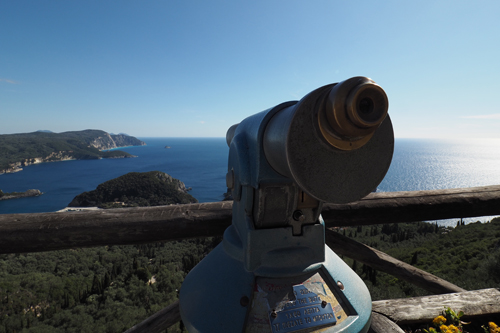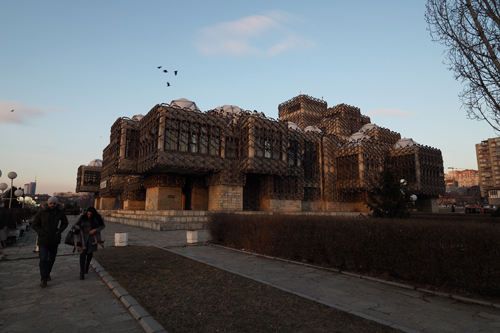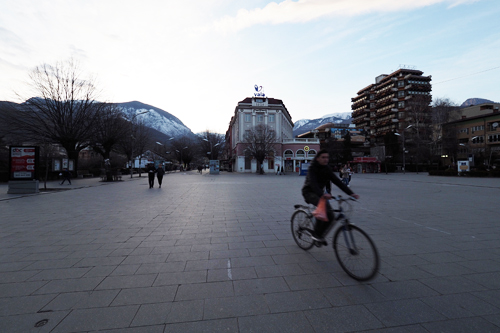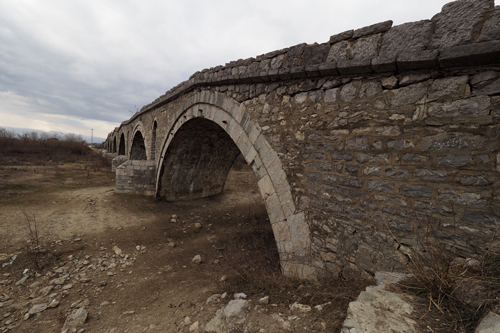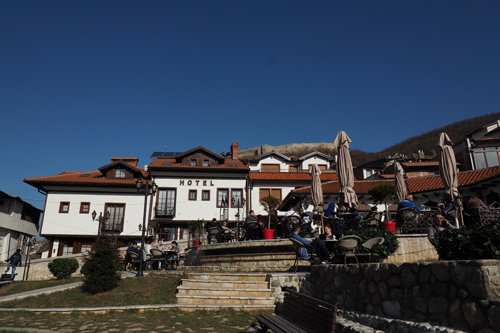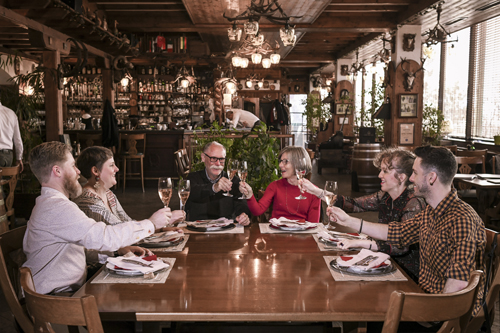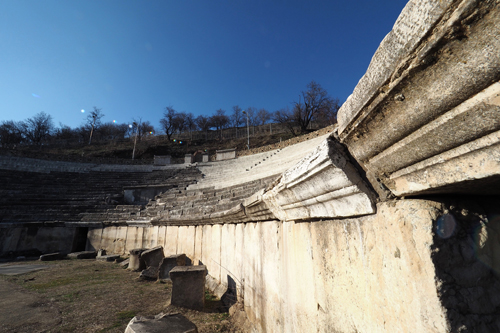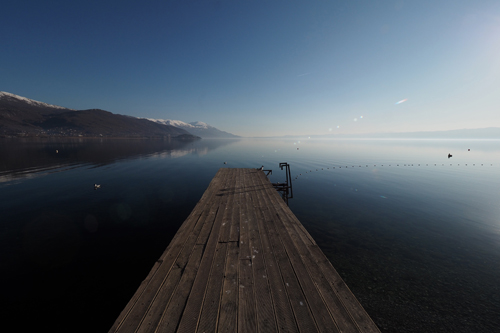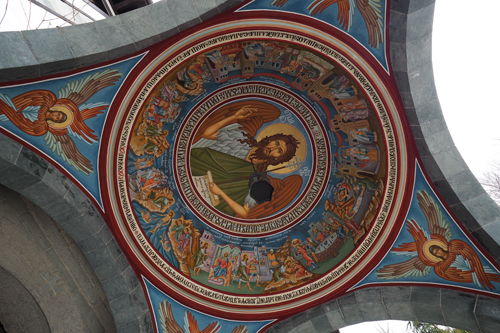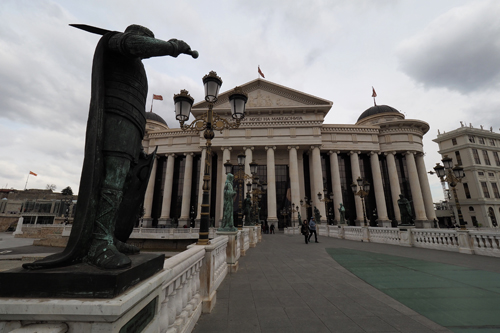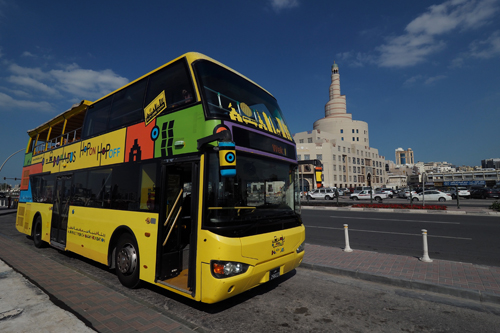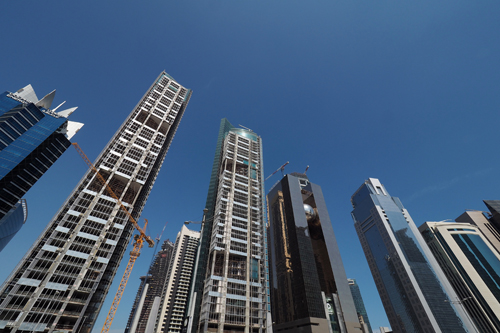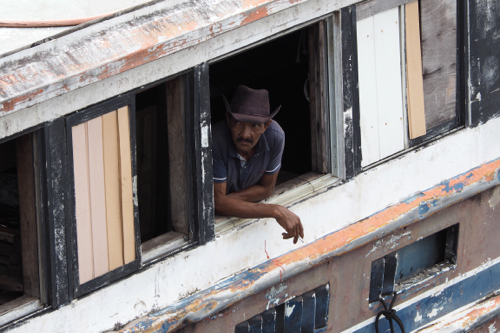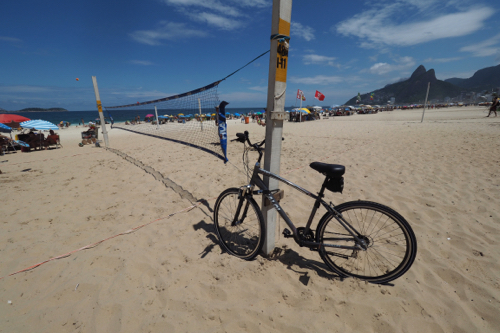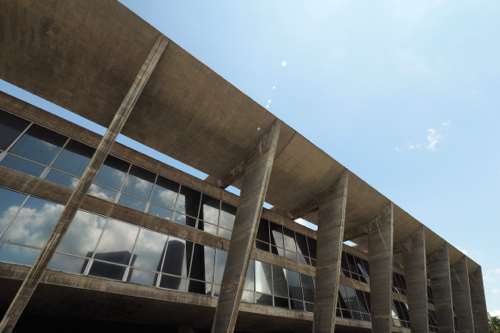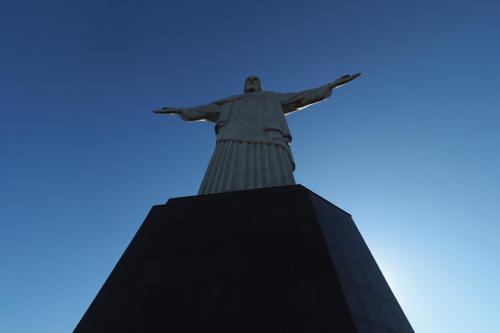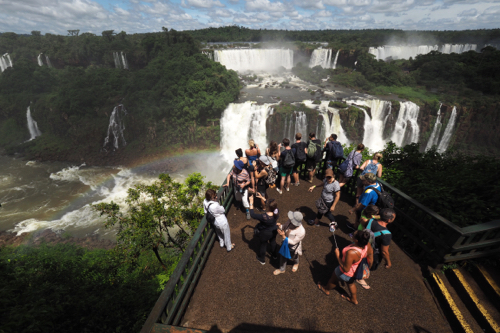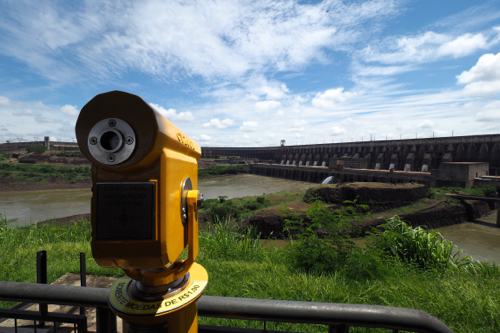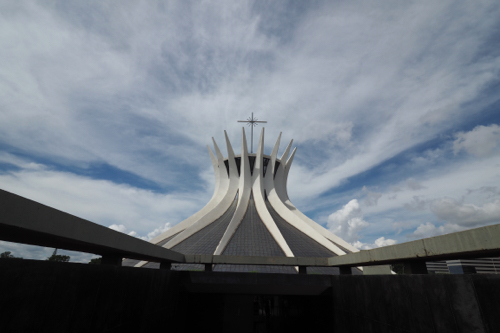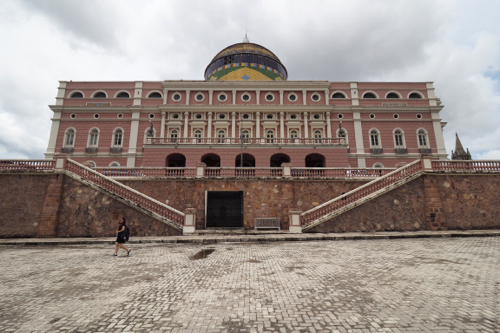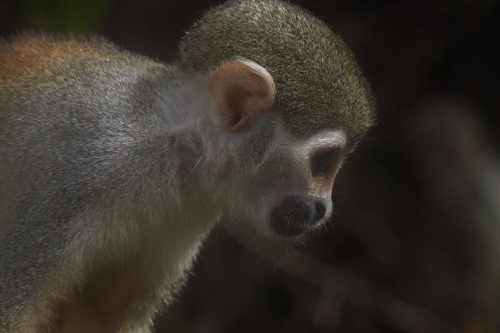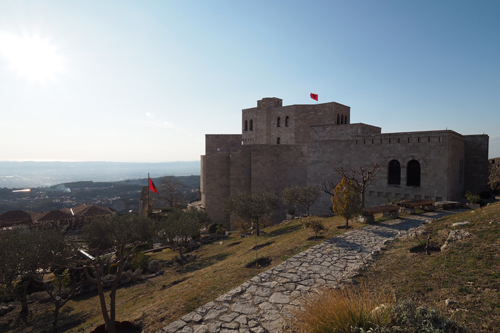
March 2, 2019. Prizren, Kosovo to Tirana, Albania.
Albania was the wild card on this trip.
Back in the early 70s, when we started travelling, Albania was a fortress country. You had to skirt around it when travelling from Italy to Greece and go via Yugoslavia.
It would have been much easier, with probably better scenery, to have travelled the coastal route.
We will soon find out.
It was just over 200 kilometres from Prizren, in Kosovo, to Tirana in Albania. That was with a side trip to visit the National Museum in Krujë.
Also known as the Skanderbeg Museum, it is one of the most significant in Albania. It is named after of the Albanian national hero, George Castriot Skanderbeg or in Albanian, Gjergi Kastrioti Skënderbej.
Only inaugurated in 1982, the museum is housed in Krujë Castle. This impregnable fortress was invaded three times by the Ottomans (1450, 1466 and 1467) but never taken. It helped Skanderbeg defend Albania from the Ottomans for over two decades.
Most of the artefacts in the museum date back to the time of Skanderbeg (1405-1468)
Skanderbeg was part of the noble Castriot family and was sent to the Ottoman court. There he was educated and rose through the ranks to become governor or Sanjak of Dibra, part of the Ottoman Empire in Macedonia.
He deserted the Ottomans during the battle of Niš in 1443 and became the ruler of Krujë, Svetigrad and Modrič. In 1444 he became the leader of the short lived League of Lezhë. This was the first time that Albania was united under one leader.
Another, more infamous, Albanian was Enver Hoxha (1908-1985), the Communist head of state from 1944 until his death. He was also the commander-in-chief of the armed forces for the same period.
Following Italy’s invasion of Albania, at the start of World War II in 1939, he became involved in politics and entered into the Party of Labour of Albania in 1941.
Hoxha was instrumental in rebuilding Albania after the war and achieved a lot for the devastated state. Under his leadership much was achieved, such as building railways, electrification and the raising of the adult literacy from 5% to 98%.
However he was tyrant.
Albania became a repressed country with labour camps, extrajudicial killing and executions, all aimed at eliminating opposition to his communist rule. This was controlled and directed by the Sigurimi or secret police who were under Hoxha’s direct rule.
Hoxha was a communist of the Marxist-Leninist persuasion and a great admirer of Joseph Stalin, who was also a tyrant.
There was a falling out between Tito’s Yugoslavian communists and Hoxha, who was constantly in fear of being invaded.
This wasn’t helped by Stalin who fuelled the conspiracy fire with the Yugoslavians.
His anxiety was so great that he eventually fell out of favour with the USSR and then tried to forge an alliance with the Maoist China.
In Enver Hoxha’s mind everyone was out to get him.
Between the 1960s and the 1980s he was so paranoia about invasion that he constructed 173,371 concrete bunkers across Albania.
That was 5.7 bunkers for every square kilometre.
We saw them everywhere.
Once in Tirana, the capital of Albania, we had arranged to meet with Eduart Cekoja, a director of Evasion Travel. This was the company that had done all the ground work for KimKim for our tour in Kosovo and Albania.
The meeting was partly social, as Eduart wanted to get our feelings on the trip. However it was mainly arranged so that we could get our replacement rental car.
The new car was a deep red Renault Clio, which was in better condition than our previous vehicle, even before the accident.
The poor old Opel Corsa was taken away and we managed to get a car park for the Renault right out the front of our hotel. This was great, as parking was at a premium in Tirana and we didn’t plan on using the car the next day.
That night we found Patricia, an Italian restaurant that was just 20 metres down the road. The service was patchy but the food excellent.
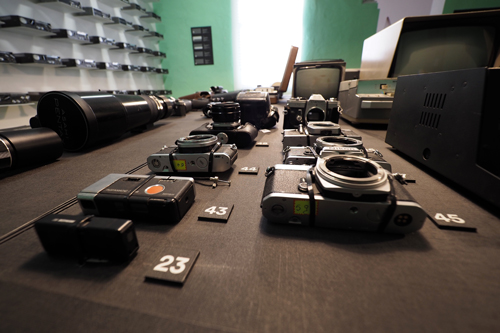
March 3, 2019. Tirana, Albania.
Our full day in Tirana was rather confronting.
This was our day to explore the city and to delve a little more deeply into the secret state that was Albania.
As we had left the new rental car at the hotel, we were on foot. This wasn’t an issue as most of the attractions were within easy reach of our centrally located hotel.
After walking through Skanderbeg Square, past the Skanderbeg statue (this man is omnipotent) we arrived at The Museum of Secret Surveillance, formerly know as The House of Leaves.
During the Hoxha era it was the home of the Sigurimi or secret police. But before that, during the German occupation in World War II, it was the headquarters of the Gestapo.
Making it’s recent history rather dark.
The house was originally built in 1931, by Doctor Jani Basho (1892-1957) as a private obstetrics clinic.
It was known as The House of Leaves because of the climbing plant that covers the facade.
The museum is very new, having only been opened since 2017. The 31 rooms are crammed with artefacts from the communist past, much of it is interactive and each room is themed.
There was even one of the bunkers in the front garden.
As the promotion for the museum states it is: ‘…dedicated to the innocent people who were spied on, arrested, prosecuted, convicted and executed during the communist regime.’
There are some amazing collections of equipment that were used by the Sigurimi to spy on the average Albanian.
Recording devices, bugs and cameras were all on display.
There were even cameras there that I have at home in my collection. This really gave clarity to the fact that this didn’t happen that long ago – it’s very recent history.
There was one exhibit The Panopticon by Jeremy Bentham (1748-1832) This British philosopher developed the idea of a radically new prison where the gaoler, who was unseen, could control the inmates by observation, or at least have them believe they were being observed.
This form or control shows staggering similarities to the Communist Chinese government’s current method of monitoring of their people through constant observation.
After a few sobering hours in the House of Leaves we moved on.
Just around the corner from the museum is the former house of Enver Hoxha.
This large, private resident is an architectural mishmash of 1930s revival and 1980s concrete modernism.
Apparently 25 members of Hoxha’s close family also lived in the house during his time there.
Surrounded by a high fence and off limits as a tourist destination is the Pyramid of Tirana.
Built in 1988 this rather bizaare structure was formerly the Enver Hoxha Museum. One of the co-designers was Enver Hoxha’s daughter, Pranvera Hoxha and it was designed to honour the legacy of Hoxha’s life.
Judging by the dilapidated state of the building, it’s not a vision shared by the current government.
There are even ideas to demolish the structure and redevelop the area.
Bunkers are an important part of the landscape in Albania, so it’s not surprising that there are museums inside two of them.
Bunk’Art 1 and 2 are history museums of the Communist, Cold War era in Albania.
We visited Bunk’Art 2 which is built in the anti-atomic bunker of the Interior Ministry of Communism. It was partly a repeat of what we had seen in the House of Leaves but there was a broader range of displays.
When technology doesn’t work. There was meant to be an augmented reality guide in Bunk’Art 2, but it didn’t work.
An interesting observation on one display explained; It was only after the fall of the Berlin Wall that the Albanian Communist regime provided their police with the weapons to face democracy – riot gear.
That night we found the restaurant Artigiano for dinner. This was another Italian feast but the service was much better.
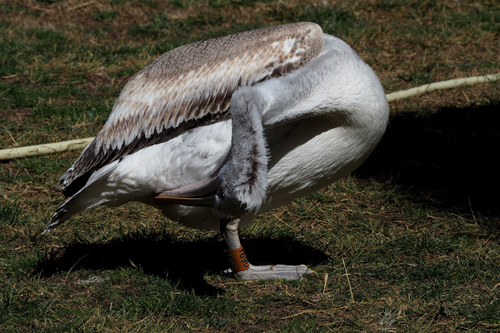
March 4, 2019. Tirana to Berat, Albania.
Driving from Tirana to Berat we stopped off at the Divjakë-Karavata National Park. With an area of 223.3 square kilometres it contains wetlands, salt mashes, coastal meadows, floodplains, woodlands, reed beds, forests and estuaries.
Apart from 228 species of resident and migratory birds, it’s also home to the endanger Dalmatian Pelican. This is the largest member of the pelican family and one of the biggest living birds.
Of the world’s remaining Dalmatian Pelicans, 6.4% of the European birds live in Karavasta Lagoon, which is within the park.
There were a number of them there to greet us when we arrived at the visitor’s centre. As was a very enthusiastic park ranger, who walked us through some of the displays inside.
There was a large lookout tower nearby and from there we could get an excellent view of the park.
We then walked down to Godulla e Pishes or Fish Lagoon and some of the marsh area.
The ranger suggested we visit the Karavasta Lagoon, this is where many of the birds congregate. We did find the Adriatic coast and some rather dilapidated beach huts, but unfortunately no access to the lagoon.
By the time we reached Berat it was getting late and I was dreading finding the hotel and then a car park.
We found the hotel Mangalemi without much trouble and there was even a car park out the front.
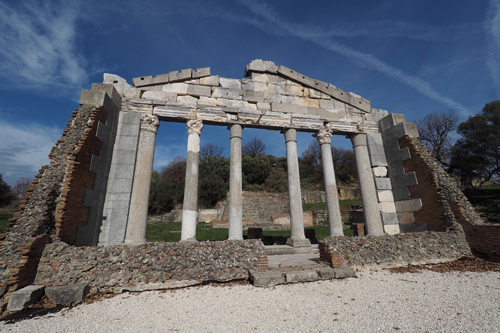
March 5, 2019. Berat, Albania.
Most of the day was devoted to archaeology, with a visit to the ancient Greek city of Apollonia.
However before that, we went to yet another monastery, Ardenica. But there was still an ancient Greek connection at that monastery.
The Monastery of Ardenica was built in the 10th century on the site of an ancient Greek temple dedicated to Artemis.
The name Ardenica is thought to have been derived from Artemis, the daughter Zeus and the twin sister of Apollo.
The monastery is famous as the place where in 1451 Skanderbeg, the national hero of Albania, married Andronika Arianiti.
This is still a working monastery and there was limited access to the main areas.
The ancient Greek city of Apollonia, the day’s primary focus, was established in 588 BC by Greek colonists from Corfu and Corinth. It was set over a large area and we spent several hours just wandering around the ruins.
We looked and looked for the amphitheater but couldn’t find it.
I think it may have been used to build St Mary’s Monastery, which was next door.
There was a small but well endowed museum associated with the monastery. This contained a number of artefacts from the Greek archaeological site.
At the end of the day we returned to Berat and had a walk around. We realised, too late, that we should have spent more time in this UNESCO World Heritage city.
Unfortunately the light was dull and this added to our frustration, especially when trying to get some snaps of the city at dusk.
Berat has a history going back to ancient times but its importance stems from the Ottoman period. Situated on the Osum River, it features a wealth of interesting architecture, that rises up the hill from the river bank.
In the 18th century the economy of Berat was closely connected to the city’s craft guilds. In 1750 there were 22 guilds, such as cobblers, leather-working, metal-working, silver-smithing and silk-making.
Many of the houses were built for wealthy craftsmen.
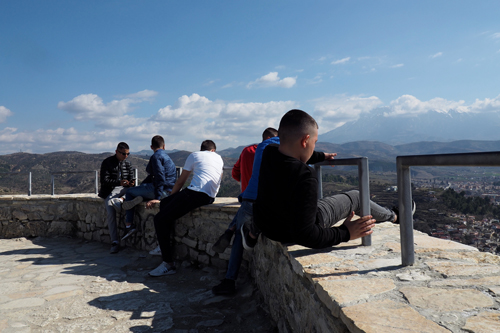
March 6, 2019. Berat to Gjirokaster, Albania.
Before the 3.5 hour drive to Gjirokastra we went up to Berat Castle, which was on a rocky outcrop overlooking our hotel.
There we met Jurgen, an architect working for the the Department of Culture.
His main task was to get videos of tourists talking positively about Berat.
He showed us around the lookout and then chose a spot for our interview.
He was rather gobsmacked that we rolled off a 40 seconds narration, without drawing a breath.
We aren’t strangers to these interviews, having done them in Iran and Japan.
We were interested in a rather out-of-place piece of architecture in the city below.
Jurgen was happy to fill us in on the details.
The ‘White House’ was a private university in Berat. It went broke as a result of the administration awarding degrees without the students doing any work.
It is now going to be converted to a five star hotel.
Berat Castle or the Citadel of Berat was built in the 13th century and is still occupied today.
The citadel was burnt down by the Romans in 200 BC. Then in the 5th and 13th centuries major reconstruction work was carried out.
Many of the buildings within the fortress wall, that were built during the 13th century, are still inhabited today.
We arrived in Gjirokastra, or Stone Town as it’s known in the tourist blurb, late in the day.
As usual we had difficulty finding the hotel and a place to park the car.
This was exacerbated by the roadworks that were surrounding the hotel.
We had been given the hotel’s phone number and this resulted in Ledia coming down to help us out.
We ended up parking in the town square, at the bottom of the hill, a far distance from our hotel.
The Hotel Bineri was brand new.
We were the only guests and I got the feeling that we may have been the first.
That evening we went for a short walk around the old part of the city and stopped for a drink at a very small bar.
Again we were the only people there.
After that we went in search of a meal and ended up at Restaurant Korda, which was just a few metres from our hotel.
There were only two others eating. They were Americans and probably from the American Aid office that was opposite our hotel.
You get used to eating in empty restaurants when you travel out of season.

March 7, 2019. Gjirokastra, Albania.
Gjirokastra is another old town with a castle dominating the skyline.
Gjirokastra Fortress (12th -13th Century AD) has a number of museums within its walls. One was military, containing captured artillery and memorability of the Communist resistance to the German occupation.
The entire fortress area was well signed and contained many, very well written, information boards.
In 1967 the Communist regime officially pronounced Albania as an atheist country.
Almost all religious buildings were destroyed. Twelve of Gjirokastras thirteen mosques were demolished.
Religious figures were imprisoned or killed.
What was interesting to note is that the restoration of the Bazaar Mosque was being funded by the Turkish government.
Recep Tayyip Erdogan seems intent on spreading his influence throughout the former Ottoman Empire.
A fascinating fact to come out of our museum tour, was that Enver Hoxha, the communist dictator, was born in Gjirokastra.
It wasn’t easy being a tourist in the town of stone.
The construction work aside, many of the main tourist sites were shut.
The Obelisk, Ethnographic Museum, Ismail Kadare’s House, and Skenduli House, all closed.
Even the tourist office was shut.
We were told by a local, anxious to sell us postcards of the closed sights, that they would’t open again until April.
It would be intriguing to see what tourism in Albania would be like in ten years time.
It seems to be developing at a rapid rate, especially in Gjirokastra where there is so much infrastructure being built.
Gjirokastra is another UNESCO World Heritage city, as was Berat, so they are doing something right in the development of their tourist industry.
These classifications don’t come easily.
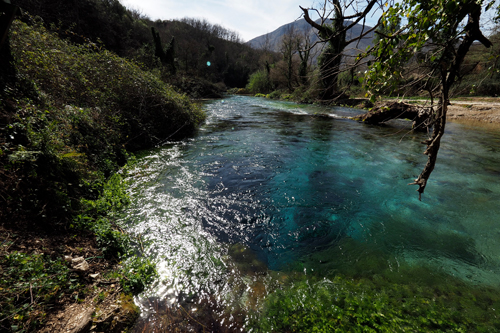
March 8, 2019. Gjirokastra to Saranda, Albania.
Before our drive to Saranda, on the coast, we had a coffee at Bar Restaurant Rrapi, which was 30 metres from our hotel.
Again it was dominated by men drinking coffee and smoking.
Thea was the only woman there.
This town of stone is dominated by mountain ranges on all sides. They still had a dusting of residual winter snow on their peaks.
We had set ourselves a few sites to see before our last stop in Albania.
First was Blue Eye, (Syri i Kaltër) a natural spring of clear blue water that bubbles to the surface from a depth of 50 metres. This is believed to be the source of the Bistricë River which runs for 25 kilometres into the Ionian Sea south of Saranda.
There we met Alex, a fair haired Dutchman, who was originally from Zimbabwe. He was doing a three month bike tour, through the Balkans, before returning home to get married.
However he seemed to think that he would have to return to Holland earlier than expected as his girl friend was missing him, not to mention the fact that she was preparing for the wedding – on her own.
The archaeological site of Butrint is a microcosm of Mediterranean history. The Greeks, Romans, Byzantines, Ottomans and Venetians have all left a legacy.
This was possible one of the best archeological sites we had visited on this trip.
Butrint’s links to history are amazing.
This is a quote was from one of the many information boards placed around the park.
“Caesar arrived at Butrint in 44BC and recognised its potential as a town. After his bitter struggle with Pompey he designated Butrint a Roman colonial city.
Augustus, Caesar’s adopted son, further developed the colony after defeating Anthony and Cleopatra at nearby Actium in 31BC.”
Talk about name dropping the who’s who of ancient history.
After checking into our accommodation, the Hotel LIiria in Sarenden, we went for a walk along the waterfront boulevard.
This was after we returned our hire car.
Our excess for the accident, in the first car, was half our US$100 deposit.
I was very happy to only pay US$50.
Saranda is a seaside town and there were far more people than we had become used to.
And more women in groups than we had seen in weeks.
It was also more expensive.
Was this the coastal Albania that we had missed back in the 70s? I get the feeling that Saranda and Albania in general has come a long way since those Communist days.
It was still off-season and again we had the feeling that we were the only guests at the hotel.
When we returned there after dinner, we couldn’t get in. There was no one at reception and no matter how hard I knocked on the door I couldn’t get anyone to answer.
Then I found a side entrance and luckily it was open.
